Gaza could have been a Middle East Singapore, but chose martyrdom
Singapore’s revolution from an impoverished Third World outpost was achieved in not much more than a generation. Gaza had the same opportunity, but chose to pass.

Much of Gaza is in smouldering ruin. And Gazans are to blame. They voted for Hamas and polls show they would do so again, not that they have had the chance lately. Hamas likes to present itself as a resistance movement, but its raison d’etre is the slaughter of Jews – and anyone else who would support Israel’s democracy. Most Gazans agree with that.
The Washington Institute – Condoleezza Rice is an adviser, as was Henry Kissinger until his death last month – reported not long before Hamas’s October 7 slaughter of innocents in Israel that 57 per cent of Gazans expressed “a somewhat positive” opinion of Hamas, as did 52 per cent of Palestinians on the West Bank.
The Ramallah-based Arab World for Research and Development on November 14 published the results of a poll it had taken, one question of which was: How do you view the role of Hamas? A total of 48.2 per cent responded “very positively” while 27.8 per cent responded “somewhat positive”. That means 76 per cent of Palestinians support Hamas after its depraved foot-soldiers flooded into Israel in October incinerating families, killing babies, raping men and women they then shot dead, and decapitating with a shovel one woman who fought them off.
Gaza’s leader, Ismail Haniyeh, 1800km away at the time, saw it all unfold on Al Jazeera, which he watched in his luxury office in Doha, the capital of Qatar. (The Qatari government funds Al Jazeera, which is best known for its anti-Semitic, anti-American broadcasts and its glorification of Islamic terror.)
The Hamas boss and his 13 children prefer Doha to the challenges of life in Gaza – which he is not-so-slowly destroying from a distance.
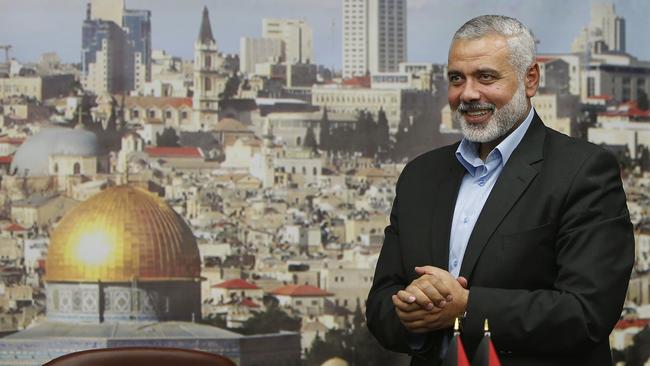
Haniyeh is so murderously vile that even Fatah leader and Palestinian National Authority boss Mahmoud Abbas can’t stand him – although they do meet irregularly, bonded by their mutual hatreds.
Abbas is often caught out telling lies about Jews and has done so all his life. He studied at a Russian university and his thesis was published as a book – The Other Side: the Secret Relationship Between Nazism and Zionism – thatbroke the news that the Jews were partners with the Nazis and as such were equally responsible for the Holocaust.
On September 6, Abbas helpfully explained that, in any case, Hitler killed the Jews because he believed them to be exploitative money-lenders. Abbas usually cynically apologises for such absurd comments but seems to have forgotten to do so this time.
Haniyeh reportedly is very wealthy. He is said to profit handsomely from the tunnel smuggling business, which can turn over $600m a year and circumvents the Egyptian and Israeli blockades of Gaza, so the status quo suits him fine. So far he has overseen five wars with Israel: 2008-09, 2012, 2014, 2021 and the one now under way. Every time, Haniyeh uses Gaza’s citizens as human shields – and thousands have died.
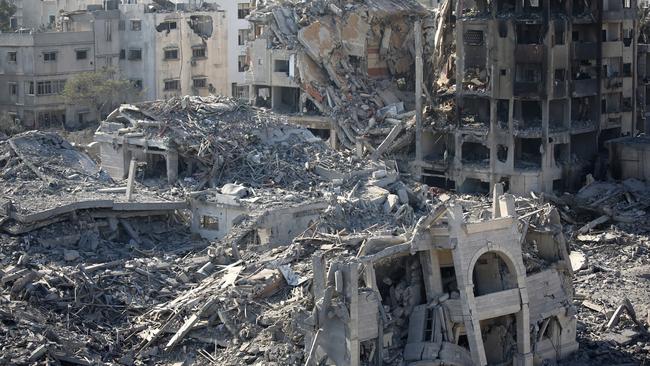
Martyrs, he calls these victims of his sinful barbarism.
Gaza has never been at this low an ebb. Rooting out Hamas – as Israel has pledged – will mean many unavoidable, non-combatant deaths, as Haniyeh fully understands, expects and for which he planned. It’s among the reasons he is hiding in Doha.
Things could have been so different for Gaza. There were proposals for its development that might have seen it on the trajectory that powered Singapore to economic prosperity after 1965.
And they have a few things in common. At independence in 1965, Singapore’s land mass (at low tide) was 578sq km – it has grown to 734sq km since reclaiming marshlands, mangrove swamps and mosquito-infested jungle. But it has many more inhabitants than Gaza with population density of 8330 people per square kilometre.
Gaza is 365sq km and had a population density of about 3600 people per square kilometre when Israel withdrew from the territory in August 2005. Despite constant claims of various genocides committed by Israel there since, Gaza’s population has rocketed and stands at 2,299,000 with a population density of 6507 per square kilometre.
Singapore’s gross domestic product per capita in 1965 was $US517. Last year it was $US87,884 and ahead of the US. The GDP for the West Bank and Gaza was about $US3100 last year – ahead of India but just below Sri Lanka.

Singapore’s revolution from an impoverished Third World outpost with no natural resources, no industry, and that relied on its neighbours for energy, food and water – does that sound familiar? – was achieved in not much more than a generation.
The future of the envied tiger economy was founded on racial and religious tolerance with a radical plan to invite foreign capital – which required political stability – and develop industrial land while investing deeply in education, basic at first but soon leaning towards the technical skills the new industries would need.
Last week the annual OECD Program for International Student Assessment results measuring the mathematical, reading and scientific literacy of 15-year-old students were announced. It rates the education performance of 81 countries: Singapore came out on top. Again.
By 1975 Singapore had achieved full employment. Industry was at first simple manufacturing including matches, fishing hooks and mosquito repellents. The transition to high-value manufacture, especially computer products, was swift. And it never scrimped on defence; like Israel, it introduced compulsory conscription and has a standing force of more than 50,000 personnel but can call on more than 250,000 reservists.
By the turn of the century Singapore was an affluent global city, having coasted through the Asian financial meltdown of 1998.
Israel’s disengagement with Gaza was announced in 2003 and by 2005 its remaining citizens were removed, many forcibly by Israeli soldiers, some dragged from their synagogues, which soon were desecrated. The departure had been on the cards for years, back to the day when a two-state solution still seemed possible, even if, as late as 2000, the Palestine Liberation Organisation’s Yasser Arafat, when offered a historic and generous deal brokered by US president Bill Clinton and Israeli prime minister Ehud Barak, sabotaged the negotiations. Peace was the last thing on his mind.

Not long before Arafat’s death the Palestinians created laws to pay salaries for Palestinians jailed in Israel for terrorist offences and murder – cementing in a permanent incentive for young Palestinians to kill Jews. For Palestinians, crime does indeed pay and it reportedly costs 8 per cent of the Palestinian budget.
Nonetheless, much of the world saw promise in Gaza at this time and, with investors from Japan, Spain, Germany, Saudi Arabia, Egypt and Morocco, what became the Yasser Arafat International Airport – a good half the size of Sydney airport – was opened by Clinton in November 1998.
International airlines started arriving and 90,000 passengers, including would-be business investors, flew in the following year. But the runways were bombed by Israel in response to the Second Intifada that started in 2000, during which 1137 Israelis were murdered and more than 8000 injured by explosions at public places and suicide bombers while others were stabbed and shot.
Killed in this hate wave was 15-year-old Melbourne student Malki Roth who was at a pizza restaurant with her best friend, who also was murdered. (The Arab woman who arranged the bombing, Ahlam Tamimi, smiled when she heard 15 had died in the attack and said recently: “Allah granted me success … I would do it again today, and in the same manner.”)
Despite the unending, unprovoked violence from Israel’s enemies, particularly those in Gaza, plans to develop the strip sprouted as business thinkers saw the strategic advantages and possibilities of the land and the extraordinary number of locals of working age. The average age in Gaza is 18.
Nineteen days after Roth was murdered, the International Monetary Fund released a report on the economic prospects of the West Bank and Gaza, which it described as “favourable”. It spoke of the need for GDP growth of 8 per cent – a challenge, but it had been achieved before. In any case, the territories’ GDP had grown an average 6 per cent annually for three decades.
The IMF reported that were there political stability “the economy should be able to enjoy an extended period of high growth”. It also stated that “there is considerable scope for expansion of Palestinian trade with the rest of the world, in particular with the European Union and the United States”.
A more detailed plan for Gaza was drawn up by Rhode Island’s Roger Williams University (ironically, Williams was a 17th-century campaigner for religious freedom and the separation of church and state), the goals of which were job creation, sustainable economic development and environmental security. It saw opportunities in Gaza’s 41km of beautiful Mediterranean coast – in contrast, Monaco can claim only 3.8km of the Mediterranean. It proposed the establishment of a free trade industrial zone that would employ 30,000 and generate jobs for perhaps another 120,000.
Initially, the plan was to build near the Egyptian border. “Later the zone would be expanded inland and offshore in Palestinian waters on to a large artificial island with a connecting causeway, which will also serve as a jet aircraft runway and with a deep water port.”
The report’s authors believed start-up costs would be $300m to $450m. It is worth noting that today’s war reportedly is costing Israel an estimated $900m a week. (The Gaza conflict is a proxy war on Jews masterminded and funded by Iran whose plan it is to undermine the Israeli economy.)
Indeed, the report predicted strong economic development across the northern Sinai area driven by the growth from Gaza.
In the style of the development of Singapore, the Williams report boldly supported the idea of an 8km to 10km causeway to the reclaimed island, its docks and airport. The prospects should have been tantalising for Gaza, Egypt, Israel – and for peace.
But the people of Gaza voted to be run by Hamas, a terrorist organisation not known for its economic ambitions. Instead of building upwards and outwards, like Singapore, Hamas decided to build down. Colloquially known as the metro, Gaza’s hundreds of kilometres of deep tunnels are wide, illuminated, and house stockpiles of weapons – including rockets – an army of its soldiers, food and water stores, sick bays and airconditioned command centres.
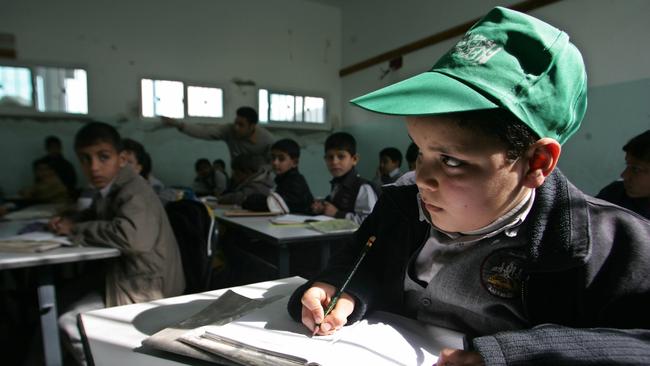
Today they also hold dozens of kidnapped Israelis who we now know are being starved, tortured and sexually assaulted. The reinforced tunnels are a wonder of modern engineering and put to shame the constricted, hand-dug burrows of the Viet Cong. Gaza’s tunnels spread under the nearby border areas of Israel so Hamas fighters can emerge at night to slay their enemies like swarms of orcs, as they did in July 2014, killing soldiers and returning with the body of Lieutenant Hadar Goldin to be used as a macabre bargaining chip.
Hamas boasted in 2012 that it had built 500km of tunnels in Gaza. There are thousands of access points, many under houses (including children’s bedrooms), hospitals, schools and mosques. How low can Hamas go? Possibly 70m. It is reported that Hamas had 1500 men digging away at the tunnels on which it has been spending about $60m annually.
Uncovering the extent of Gaza tunnels, the Israel Defence Forces – which knows a bit about tunnels itself, having built a complex of them to rehearse troops fighting in those situations – estimated in 2014 that there were 600,000 tonnes of concrete in them by then. A recent estimate put that at about 725,000 tonnes. To put that into perspective, there are 80,000 tonnes of concrete in Sydney’s Gladesville Bridge whose arch, when it was completed in 1964, was the longest single concrete span in the world. There are 113,000 tonnes of concrete in the Empire State Building.
Instead of its tunnels, Gaza could have constructed its own Burj Khalifa, the pride of the Arab world and the world’s tallest building. And one wonders what those Palestinians who spontaneously erupted in celebration with the news that almost 3000 people had been vaporised when Islamic terrorists brought down the World Trade Centre towers in New York would think if they knew the concrete in Gaza’s tunnels could have built both towers – twice over.
The goodwill among Israelis towards Gazans is enduring. It dates back to a remarkable American woman, Henrietta Szold, who in the early decades of the last century founded a hospital, clinics and a system of visiting nurses for the people of Palestine who could not afford First World care, no matter their religion.
That spirit has never faded. For a couple of years I was a member of Project Rozana, an organisation established by big-hearted Melbourne businessman Ron Finkel. It helps raise funds for hospitals and healthcare in Israel with a particular focus on assisting Palestinians on the West Bank and in Gaza to access that care in Israel.
It also raises funds for another project called Road to Recovery, started by a Jewish man whose brother was murdered by Hamas. This involves more than 1000 Israelis, often retirees, who volunteer to use their own cars, while paying for their own petrol, driving to the gates of Gaza and the West Bank and transporting Palestinians, mostly children with their mothers, to modern care at Israeli hospitals where you will also find ambitious young Palestinians training as doctors and specialists. You also would regularly find being treated there the children of senior Hamas officials.
These volunteers drive the Palestinians back home as well. Finkel, as noble an Australian as you will meet, believes in trying to repair the relationship between Israelis and Palestinians one family at a time.
Until recently, one of the drivers has been Finkel’s old friend, Canadian-Israeli Vivian Silver, who not only drove Palestinians but co-founded an organisation called Women Wage Peace that included activists on both side of the Gaza fence. She worked with other peace organisations and sought partnerships with the people of Gaza in cultural projects.
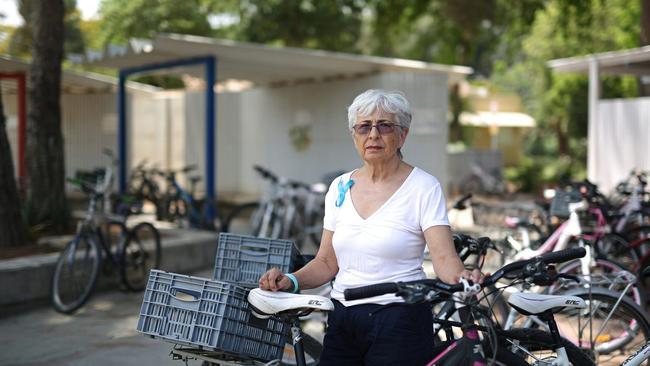
She was murdered in the massacre at Be’eri kibbutz on October 7 and her house was burned down. More than 130 of her neighbours also were pointlessly killed.
Silver’s was not the only kibbutz that had sought ties with Gazans. The kibbutz movement predates the establishment of the state of Israel and comprised socialist collectives that ran farms which, among other initiatives, led the concept of water management as Israel has turned granite into green – practices they have shared with their Arab neighbours.
Farther south is the village of Nir Oz, which also was once earmarked for joint economic partnerships with villages in southeast Gaza. One of the men who established Nir Oz in 1955 was Arye Zalmanovich, 86, who was kidnapped on October 7 and has died in Gaza, the oldest victim of October’s massacres. More than 180 of his friends in the village were executed that morning.
To the north is the Kfar Aza kibbutz whose residents had planned to fly kites at the Gaza border on October 7 to fill the sky with hope and as a demonstration of peace towards their Palestinian neighbours.
But hate was on the horizon and it trumped hope that day.
What is going on in the minds of those who can torture and massacre their neighbours, burning some alive and then even spit on the naked body of an Israeli woman while it was being transported back to Gaza?
The answer is indoctrination: the anti-Semitic poison that is the mark of Palestinian newspapers and broadcasters, and imams across the globe, and the foul and regularly condemned education system overseen by the UN.
If you tell Palestinian children that Jews are the descendants of pigs and apes, that they stole your land and that every hardship you face is the direct result of their presence there, this is what you will get.
If you name streets, sporting events and even schools after mass-murdering terrorists and make celebrities of them when they are freed from jail, this is what you will get. If you make role models of those who would blow themselves up in places where Jews gather, this is what you will get.
Al Jazeera reported the story on July 14 this year of a group of Palestinian teenagers asked what they wanted to be when they grew up. They did not hesitate: “Martyrs,” they said in unison.



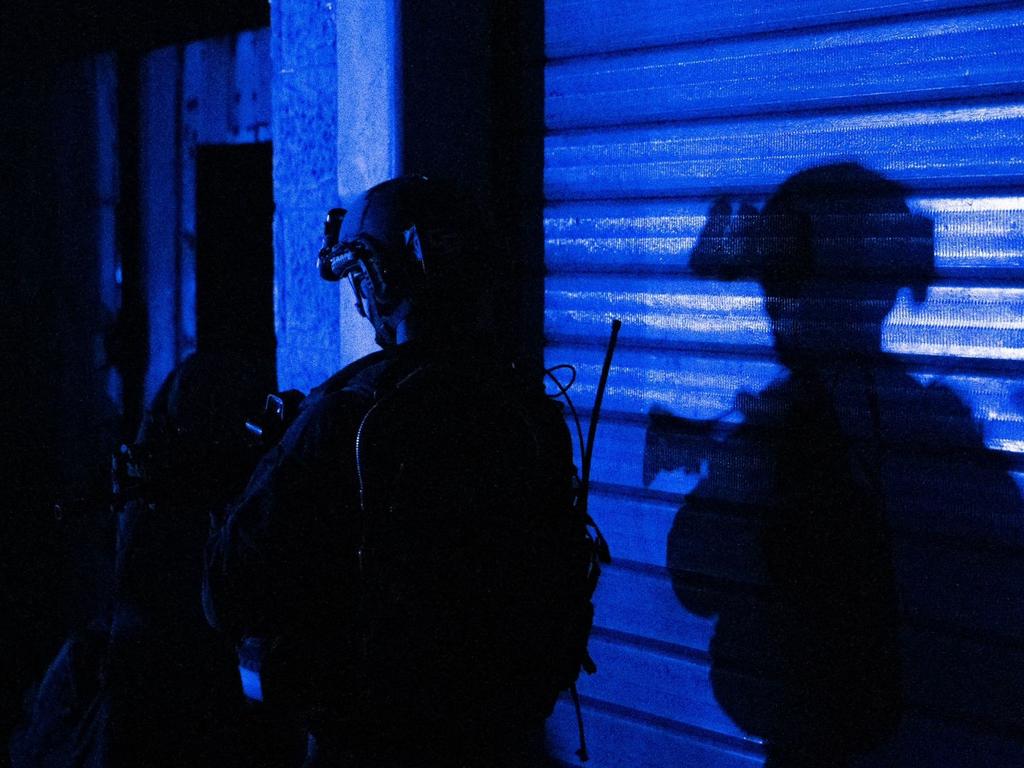

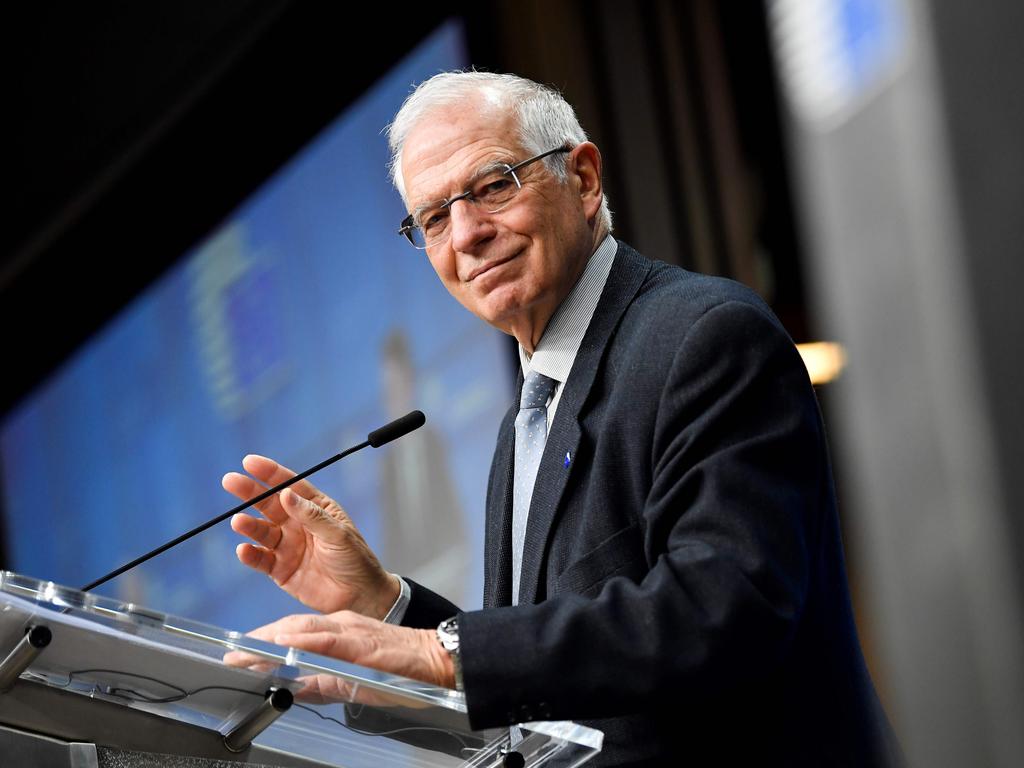
To join the conversation, please log in. Don't have an account? Register
Join the conversation, you are commenting as Logout